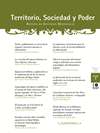Resumen
Resumen: El Bajo Nalón conforma un espacio bien definido con la existencia del importante territorio medieval del alfoz de Pravia. La configuración del paisaje medieval en el Cuarto de la Meruca y los cotos de Ranón y Muros, pertenecientes a dicho alfoz, viene marcada por la continuidad de ocupación de un espacio con numerosos restos de diferentes etapas de poblamiento, que se registran ya desde los primeros momentos del poblamiento regional con posibles espacios de hábitat o territorios de caza. La presencia romana es muy relevante por medio de villae y representa una cierta continuidad en cuanto a la reutilización de anteriores enclaves castrales de control.
El estudio de los procesos de asentamiento y control de un paisaje con grandes huellas de acción humana debido a su localización es, en este caso, el inicio de la investigación de su articulación espacial durante el Medievo.
Palabras clave: territorio, espacios castrales, villae, continuidad, poblamiento medieval.
Abstract: The configuration of the Bajo Nalón medieval landscape, is closely influenced by the area with several archaeological rests on occupational continuity during rhythmical settlements process from the first human establishment in the region. The analysis of the landscape with exceptional potential in to settle down process and control is, thus, the begin of it spatial division research during the medieval times.
The actual study is a documental and space analysis of the Bajo Nalón landscape, with a histoy of the investigation sinthetized. The limits of this territtory representing one quarter that divides the ancient Pravia’s Alfoz in Asturias, attached to the medieval most important ways on the coast and the mouth of the most important river in the region.
The first signals of population go as far back as the lower paleolithic with open air habitat like hunting territory. Its later configuration by the hill fort existence, with landscape population continuity during the roman domination. The presence of roman culture is also very excellent with the settlement of diverse villae and control stablishments. The first high medieval population was its origin in the posible continuity from roman times or new creation, of villae cum ecclesiae and rebuildings in the same control points and power.
Keywords: territory, neolitich evidences, hill fort settlement, villae, medieval population.

